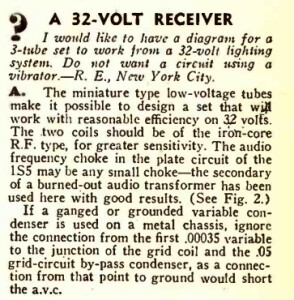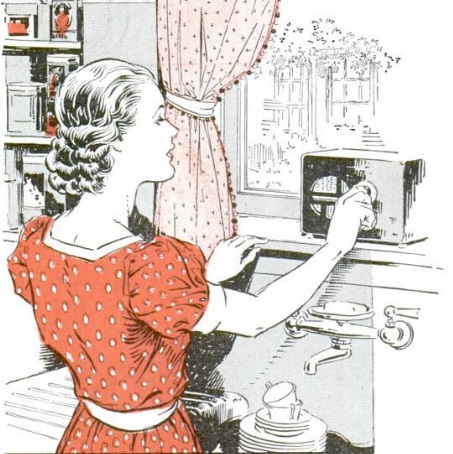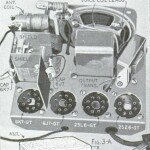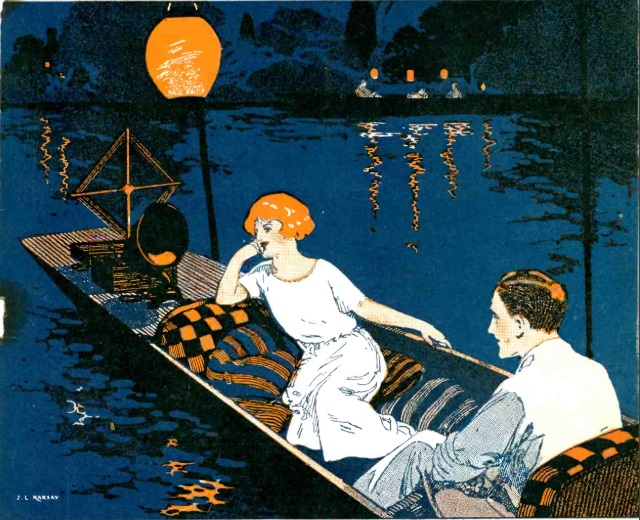
 Eighty years ago this month, the January 1944 issue of Radio Craft carried this circuit for a receiver to run directly from 32 volts. Specifically, a reader requested a circuit that would “work from a 32-volt lighting system.” The circuit used three tubes, 1T4, 1S5, and 1S4. The filaments were in series with a 550 ohm resistor, and 32 volts was sufficient for the B+.
Eighty years ago this month, the January 1944 issue of Radio Craft carried this circuit for a receiver to run directly from 32 volts. Specifically, a reader requested a circuit that would “work from a 32-volt lighting system.” The circuit used three tubes, 1T4, 1S5, and 1S4. The filaments were in series with a 550 ohm resistor, and 32 volts was sufficient for the B+.
The “32-volt lighting system” was undoubtedly a Delco Lighting Plant, designed for lighting up the farm. It consisted of a motor generator which charged 16 2-volt batteries. The generator would kick in automatically when the batteries needed charging, and shut off when they were fully charged.
The only mystery here is the reader’s return address, New York City. While some parts of the city had DC power at the time, it was 110 volts. He must have been designing the circuit for someone on the farm without electric service.

 Eighty-five years ago, this happy homemaker is listening to a program while working in the kitchen, thanks to a four-tube TRF set described in the August 1939 issue of Popular Mechanics.
Eighty-five years ago, this happy homemaker is listening to a program while working in the kitchen, thanks to a four-tube TRF set described in the August 1939 issue of Popular Mechanics.












